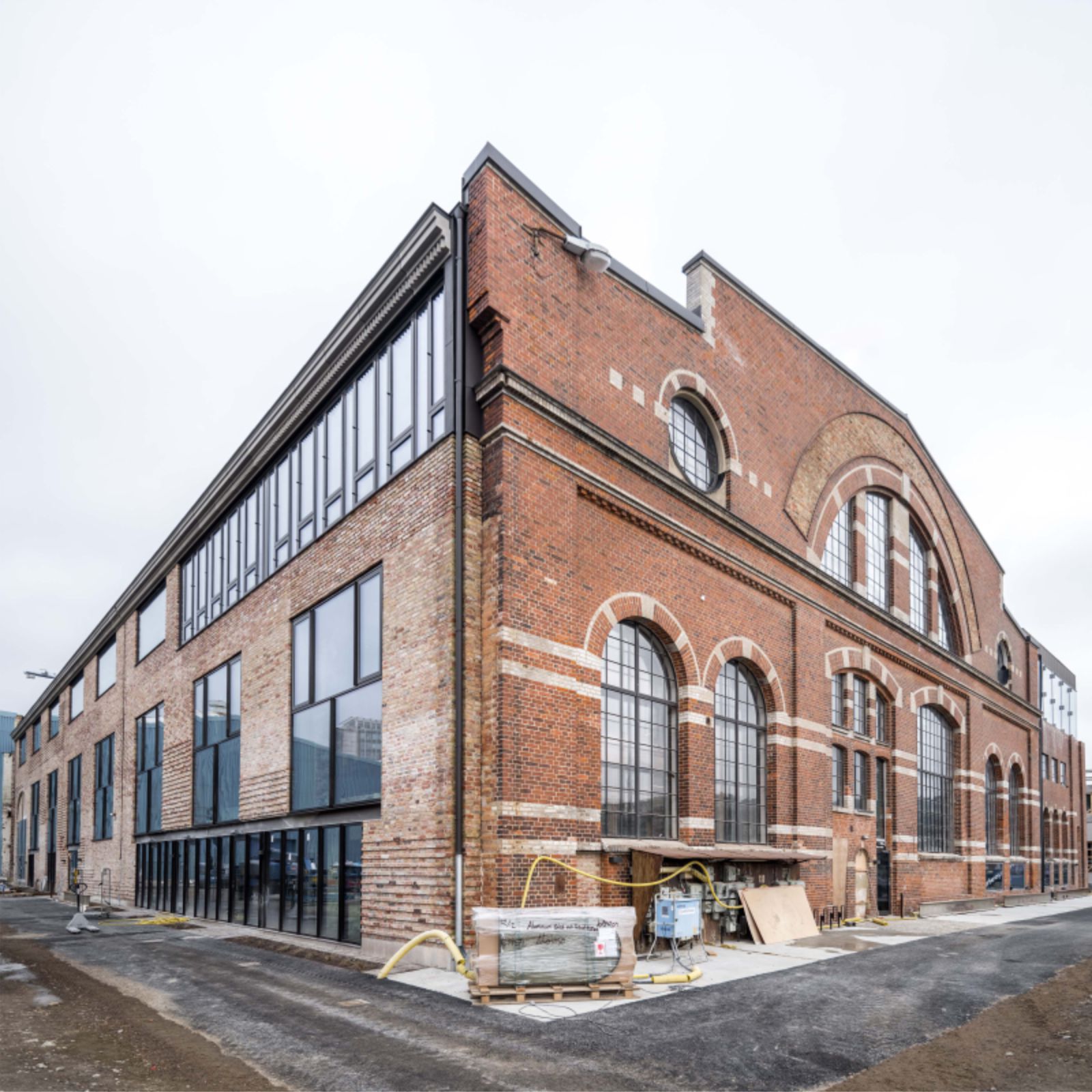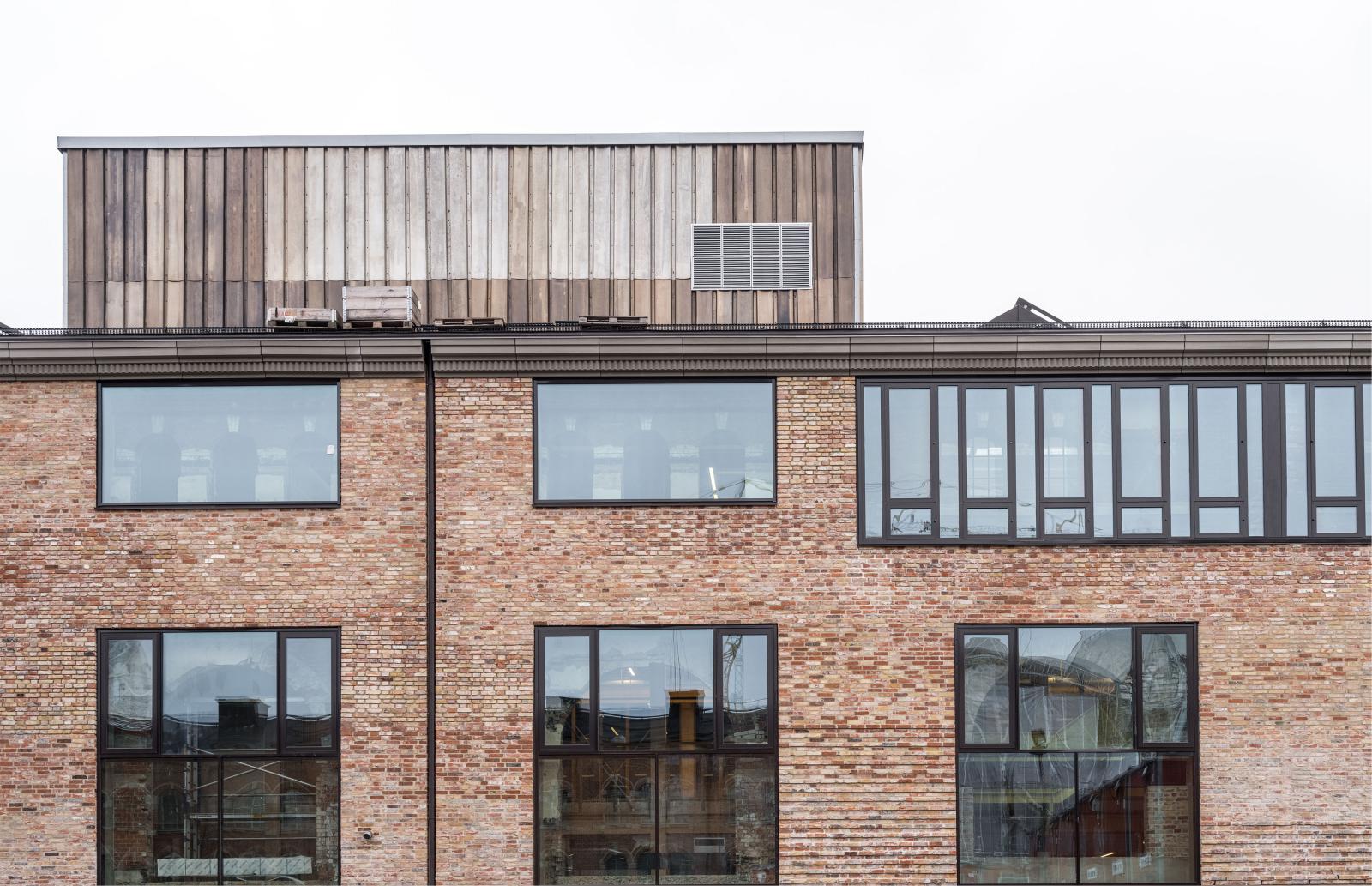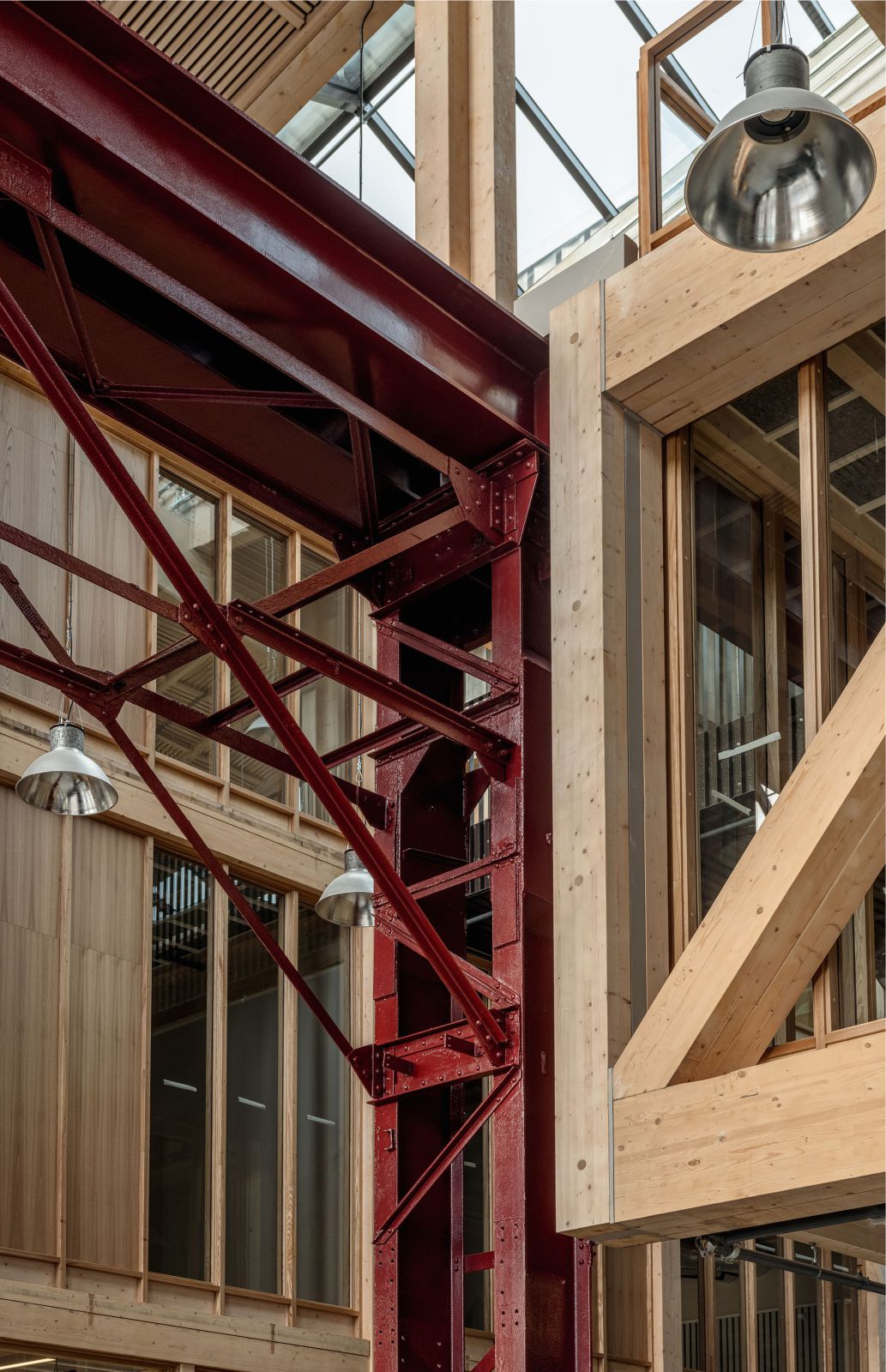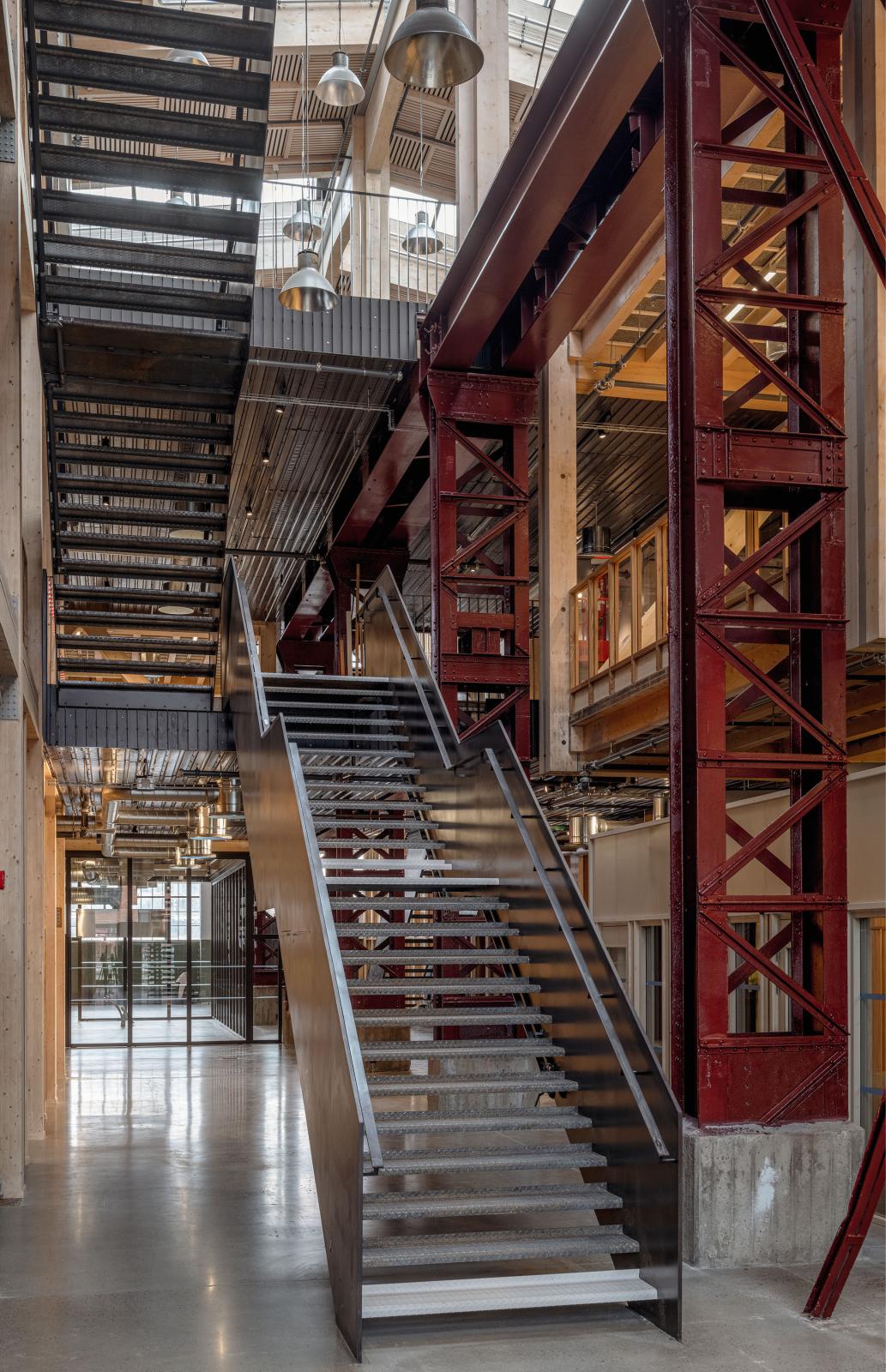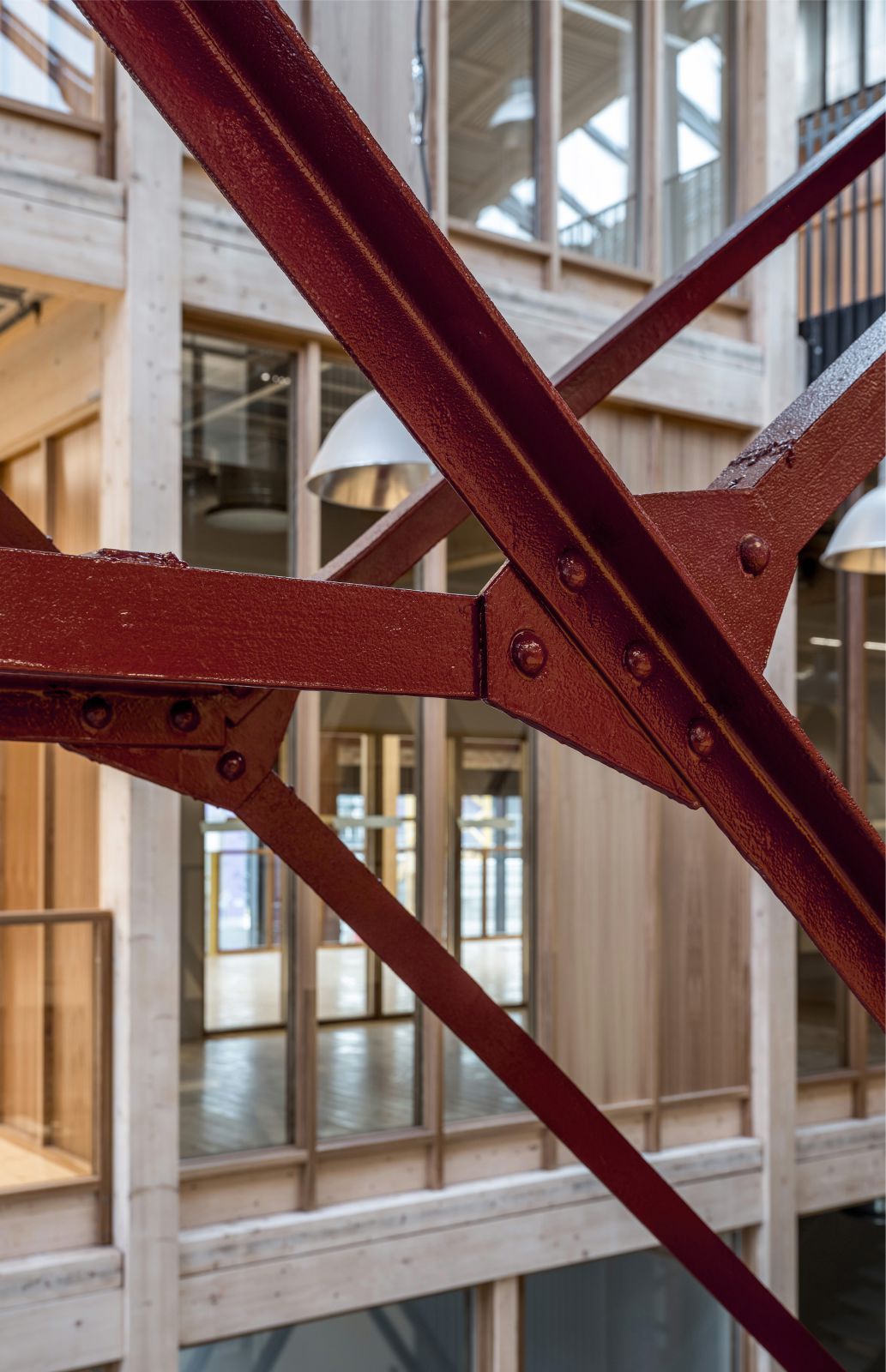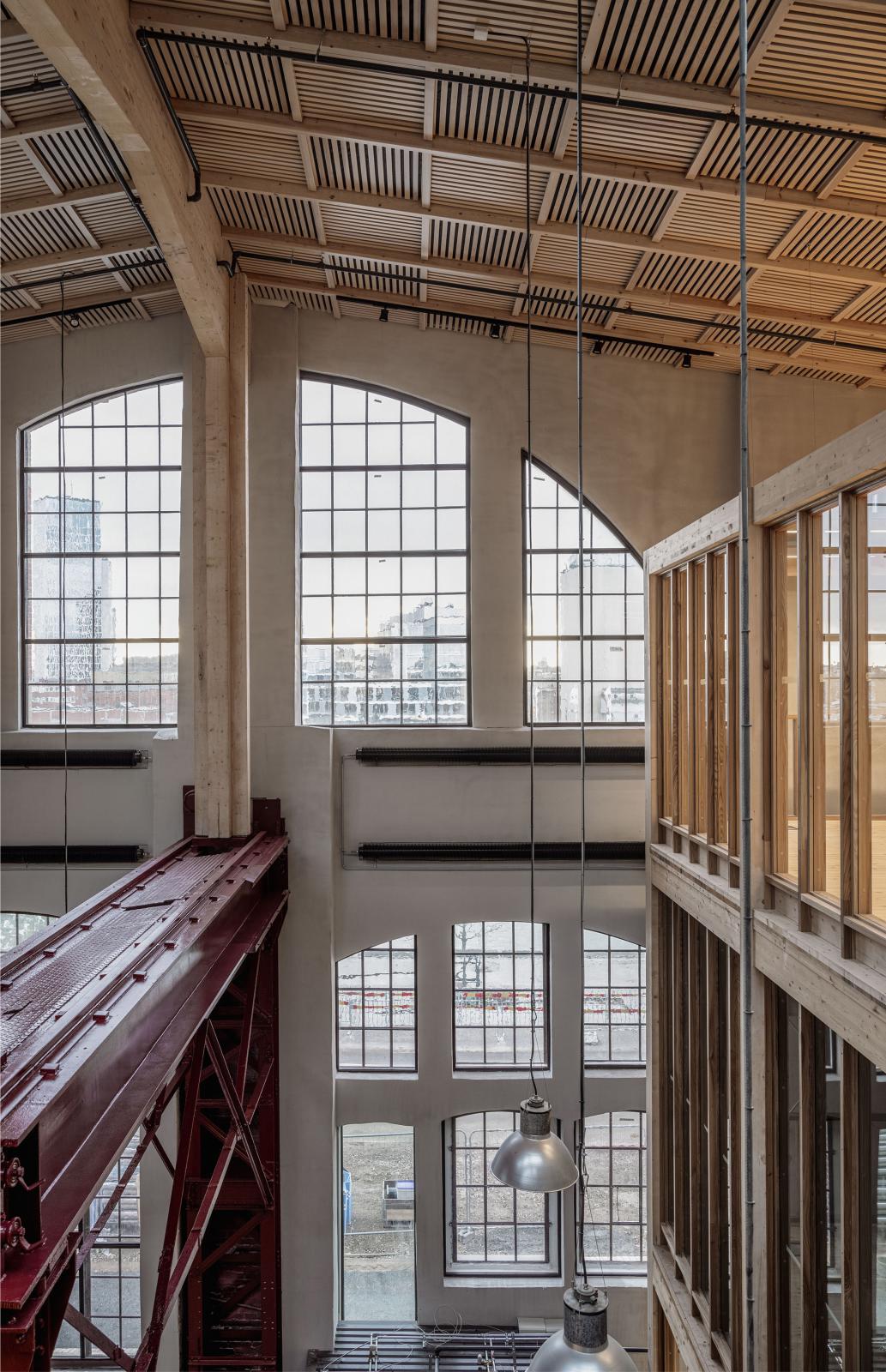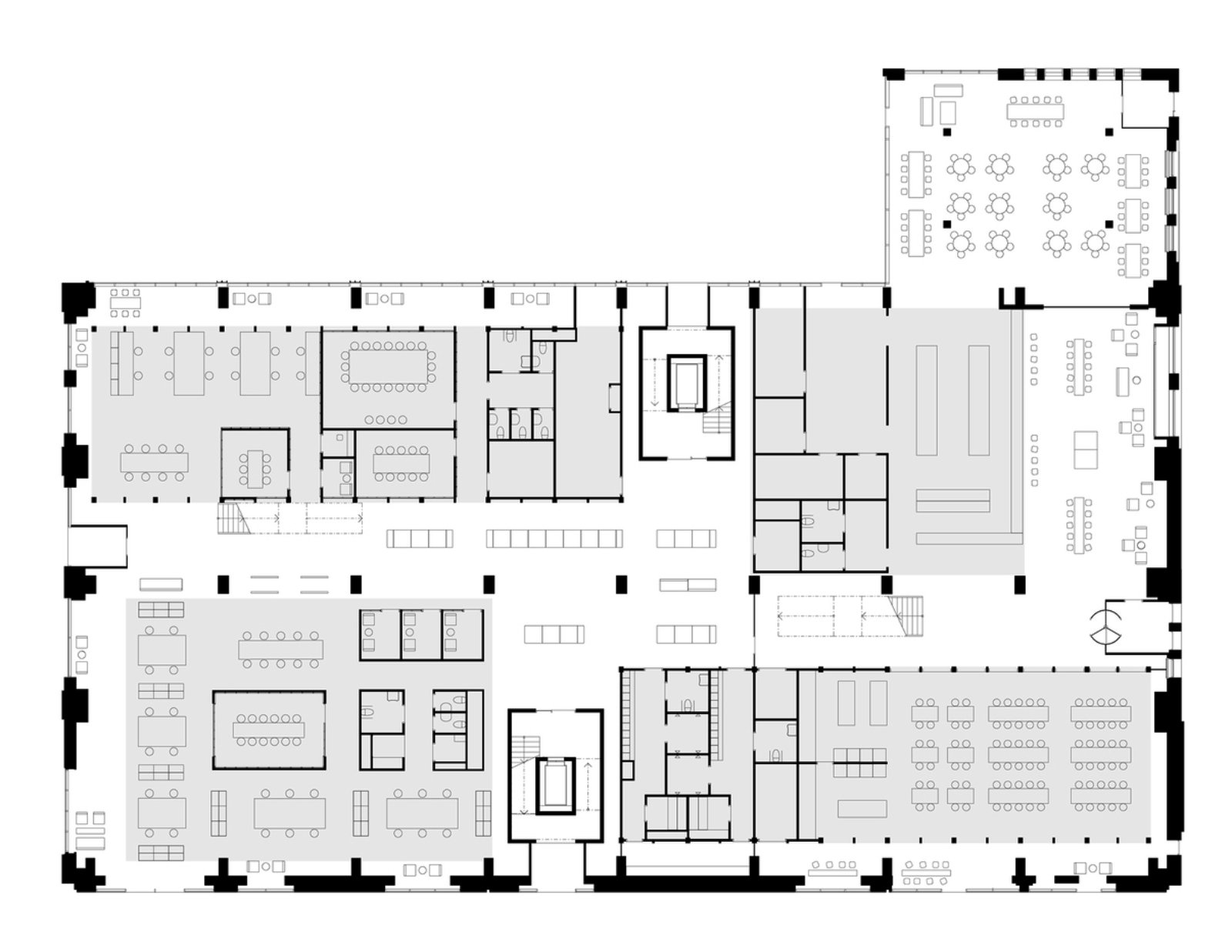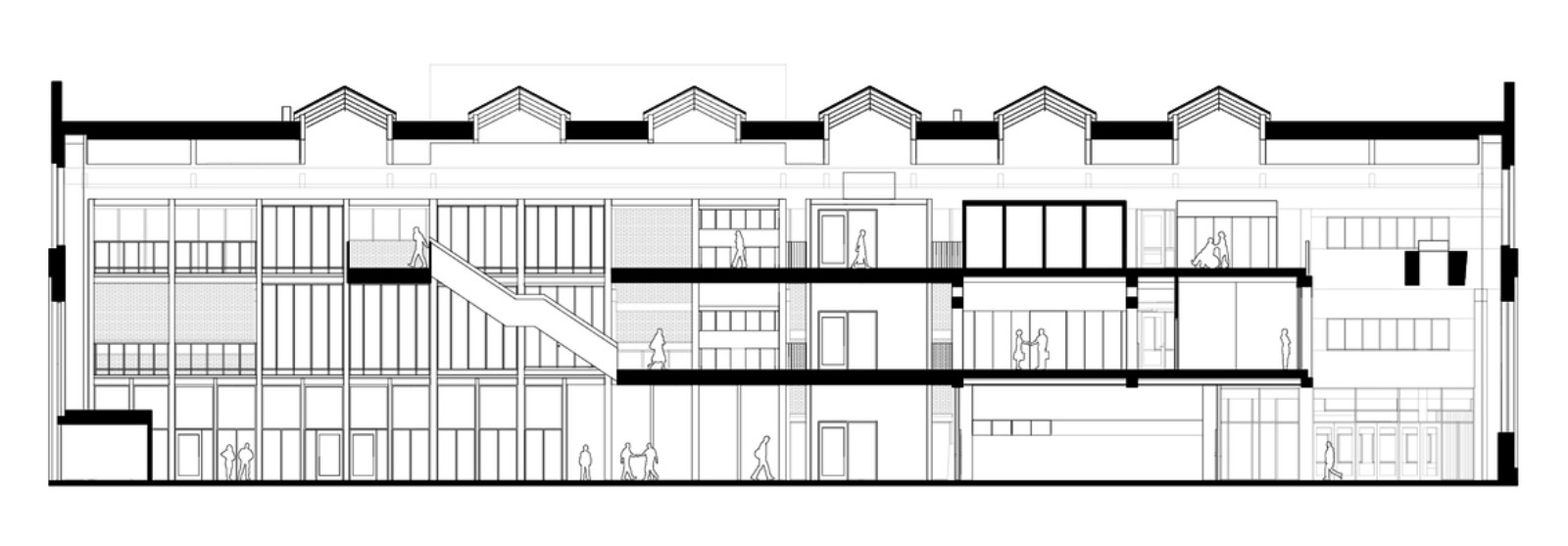The transformation of Gjuteriet in Malmö, designed by Kjellander Sjöberg for Varvsstaden, has been completed. Focused on the intensive re-use of repurposed materials, the project demonstrates how existing buildings can be reimagined based on circular principles.
Formerly a ruin, the distinctive building has been given a vibrant new life as an active and social new urban place telling a multifaceted story about the port’s rich maritime heritage. Varvsstaden is a major regeneration project in Malmö transforming the old shipyards into a sustainable new district.

The historic Gjuteriet foundry building is a key landmark in the area representing Malmö’s emergence as an industrial city. The project is both about the reinvention of the building and its wider environment. Kjellander Sjöberg have developed a program with maximum social, local and environmental benefits which bring to life an active new public realm along the adjacent quay, dry dock and inner basin.
This new focal point in Malmö will kick start the regeneration of the Varvsstaden district which is fast evolving into an exciting new mixed-use neighbourhood with homes, workplaces and a new fine arts campus for the University of Lund. Gjuteriet is a new inspiring and experiential company headquarters for Oatly.
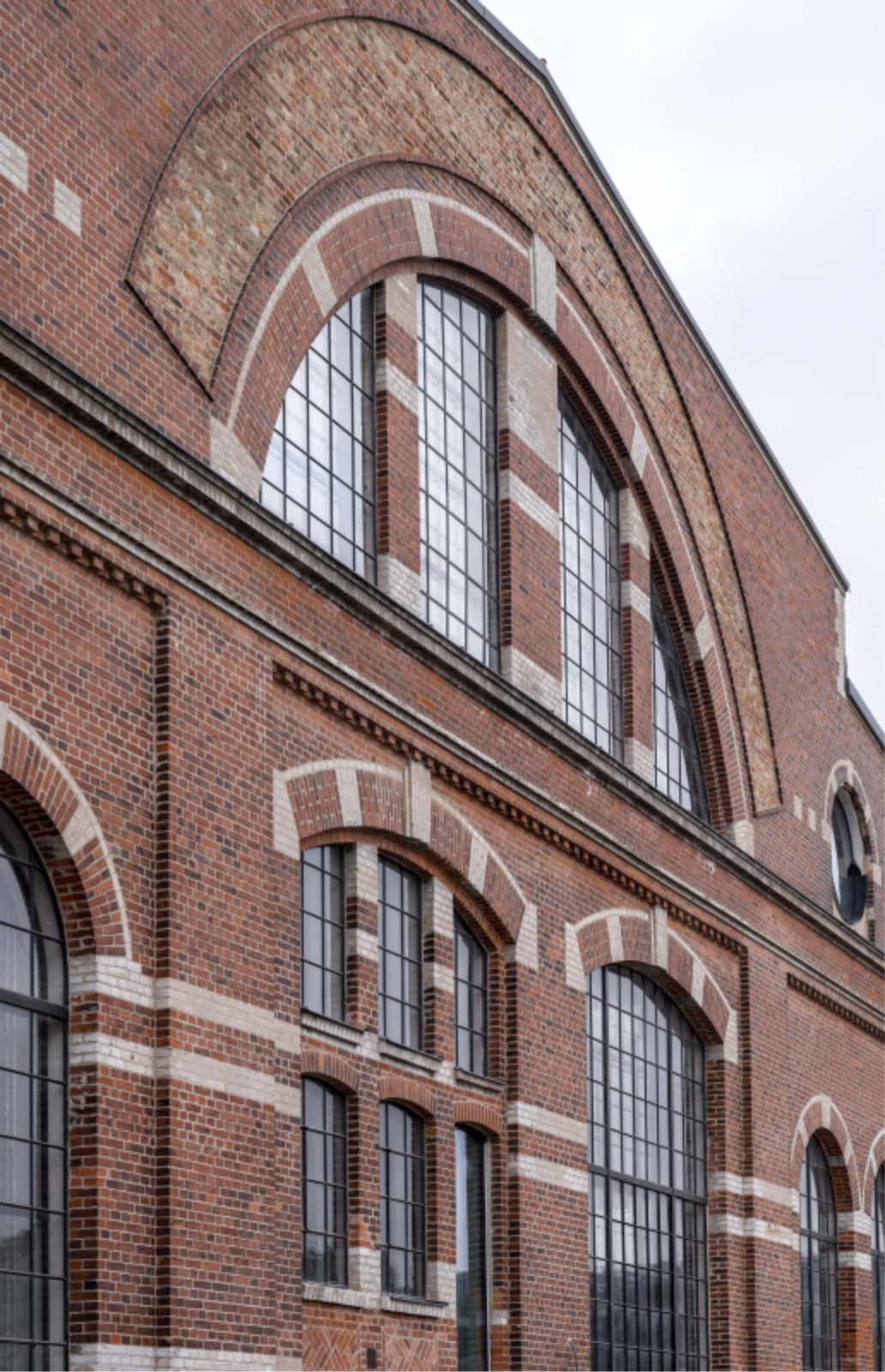
It’s an informal, open, authentic workplace built around social meeting and communal spaces – it is also creative, collaborative and activity based – a reflection of the shared values of its users. The ground floor is a generous shared realm that will invite the public to a cafe, restaurant, foyer and exhibition space.
The overarching project ethos placed an acute emphasis on resource preservation and a minimal carbon footprint; what can be built within planetary boundaries, what materials were already available to achieve the most sustainable outcomes?

Varvsstaden had made an enlightened head start, creating a material bank in a nearby warehouse stocked with upcycled materials from other disassembled wharf buildings. Central to the sustainable re-use approach this ‘library of things’; bricks, sheet metal, corrugated panels, stairs, light fittings and more, became the project’s primary building resource and main design driver.
Additions to the existing steel frame are in glulam timber and CLT; wherever possible new materials required were sourced from local and renewable sources. Timber is the main regenerative material that defines the new spaces which provide a healthy environment.
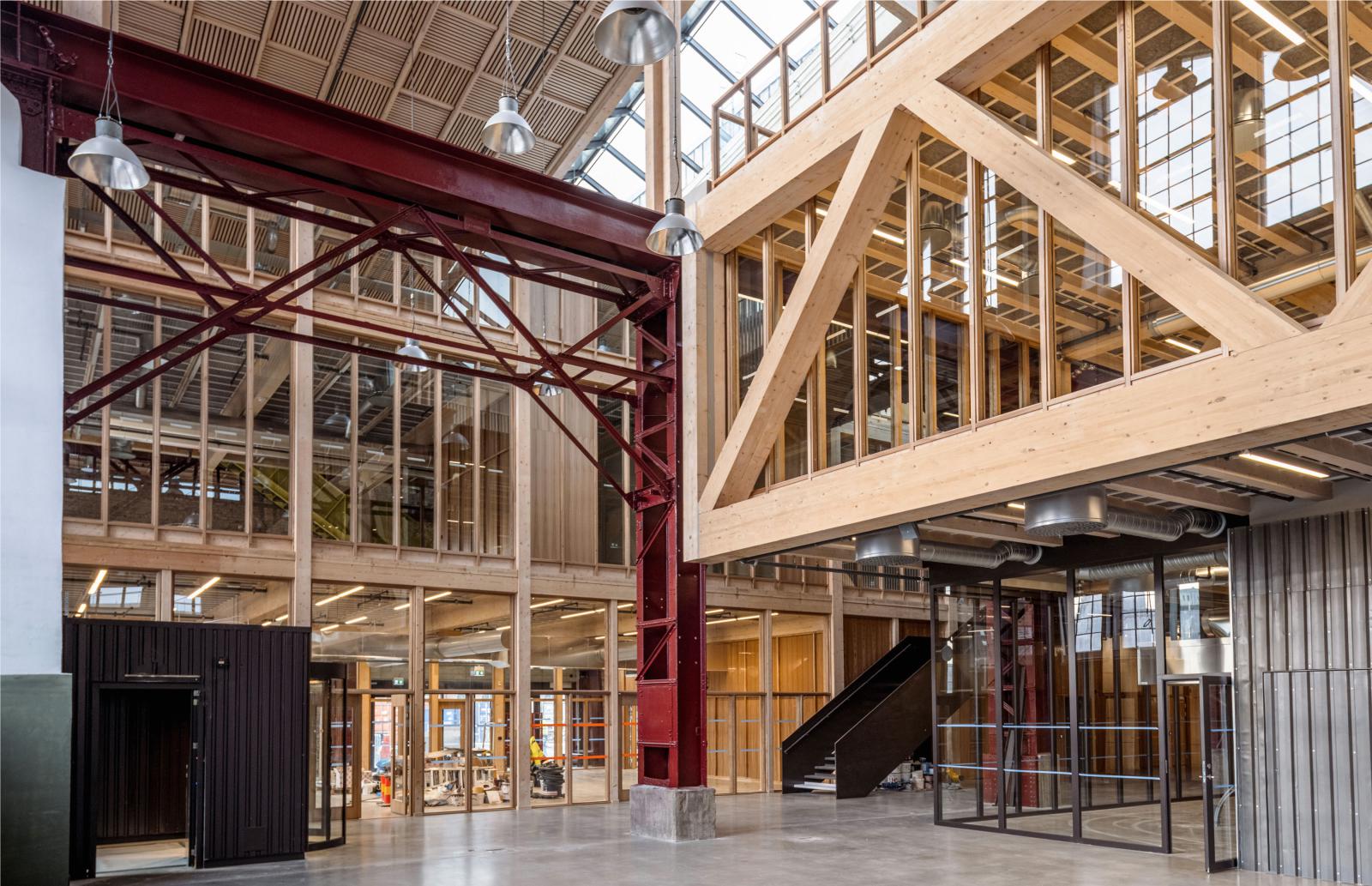
Kjellander Sjöberg began with what was already there: the imposing steel structure, the brick walls, the frail and broken collage-like character of the building we found – all these preserved stories and narratives that have accumulated over time. The characteristic basilica gables were renovated and insulated on the inside.
The fragmented collage of the west façade that bore interesting historical traces lives on with a new protective outer façade of recycled brick. Original brick vaults sealed over the years have been re-opened and are once again prominent features of the building.
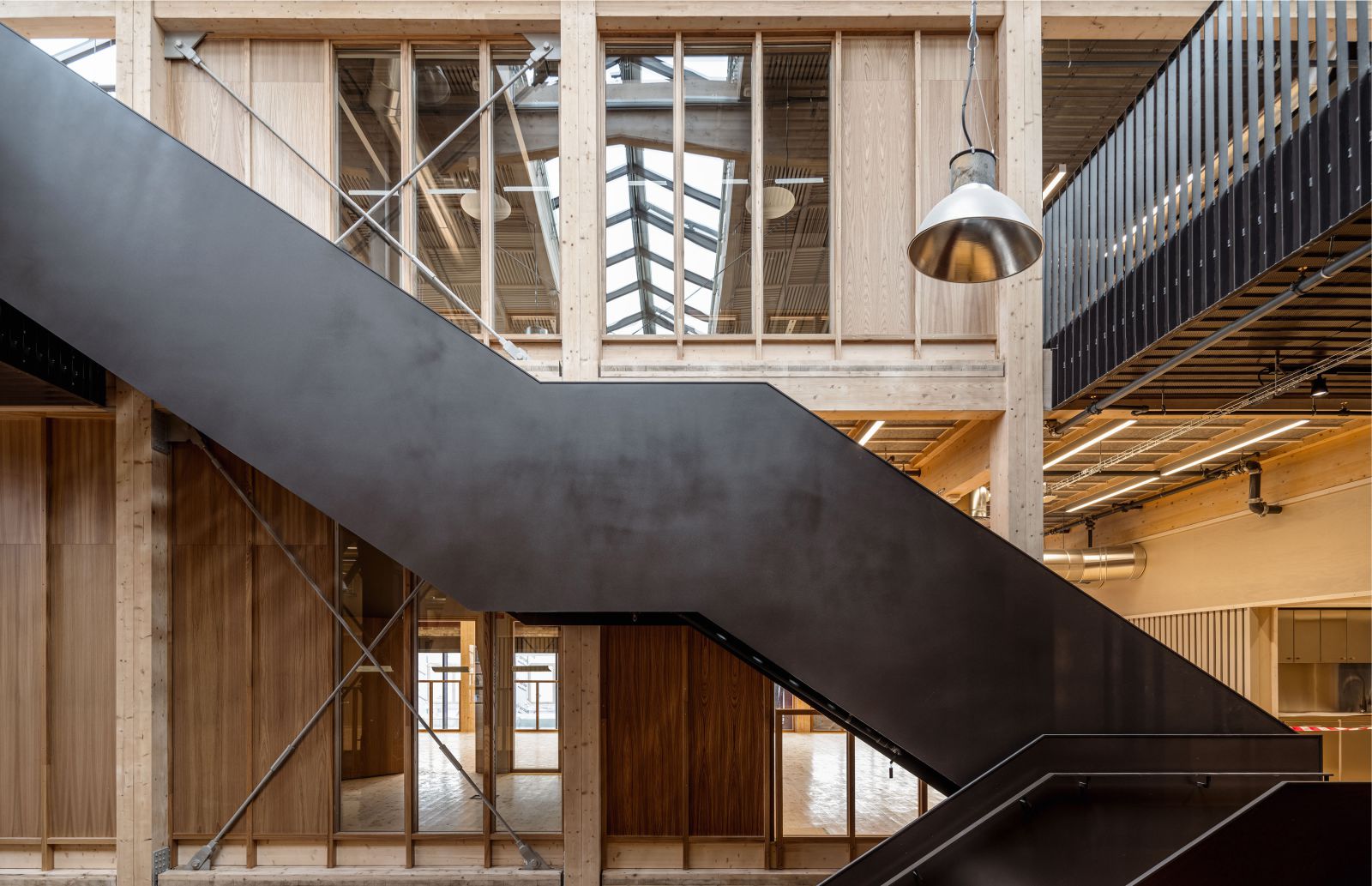
The original internal east wall found ruined and largely torn away is replaced with a new façade which expresses the steel frame subdivision comprising glazed compartments and staggered hanging brick screens. The large industrial hall with an existing steel frame and traverse was once alive with busy ship component building activity. Today, the impressive volume is filled anew with new spaces that encourage creative use, social interaction and collaboration.
Exceptional daylight permeates throughout the building. An architecture of transparency, and visual connections revolves around the movement of staircases that anchor and connect floating volumes. By rethinking the space, Kjellander Sjöberg have created a dynamic spatial sequence in three dimensions. Source by Kjellander Sjöberg Architects.

- Location: Malmö, Sweden
- Architect: Kjellander Sjöberg Architects
- Collaboration: Sted Landskap, BK Konsult, Matter by Brix, Martinsons
- Developer: Varvsstaden
- Contractor: PEAB
- Tenant: Oatly
- Area: 6030 m2
- Year: 2023
- Photographs: Rasmus Hjortshøj – COAST, Courtesy of Kjellander Sjöberg Architects
